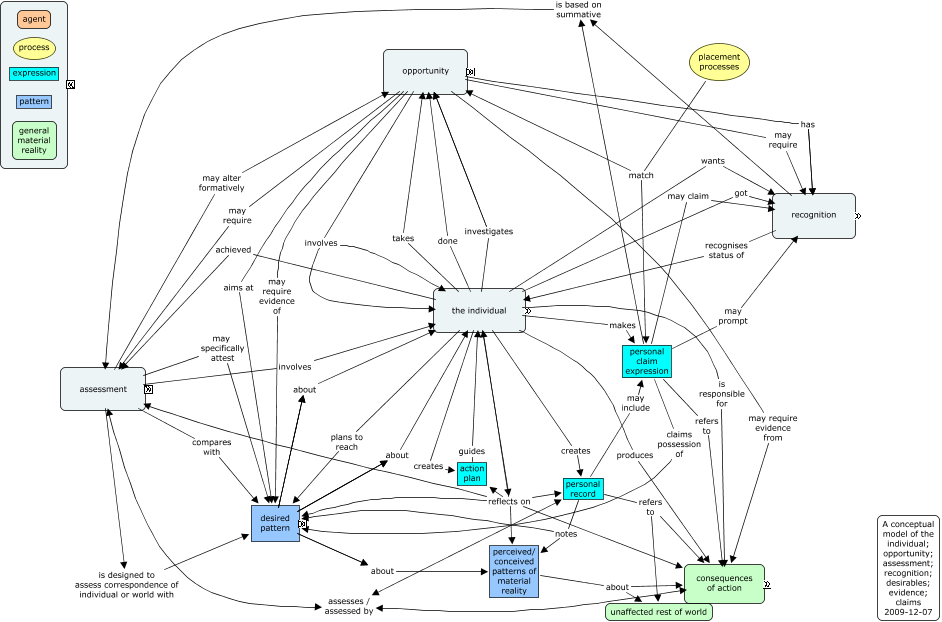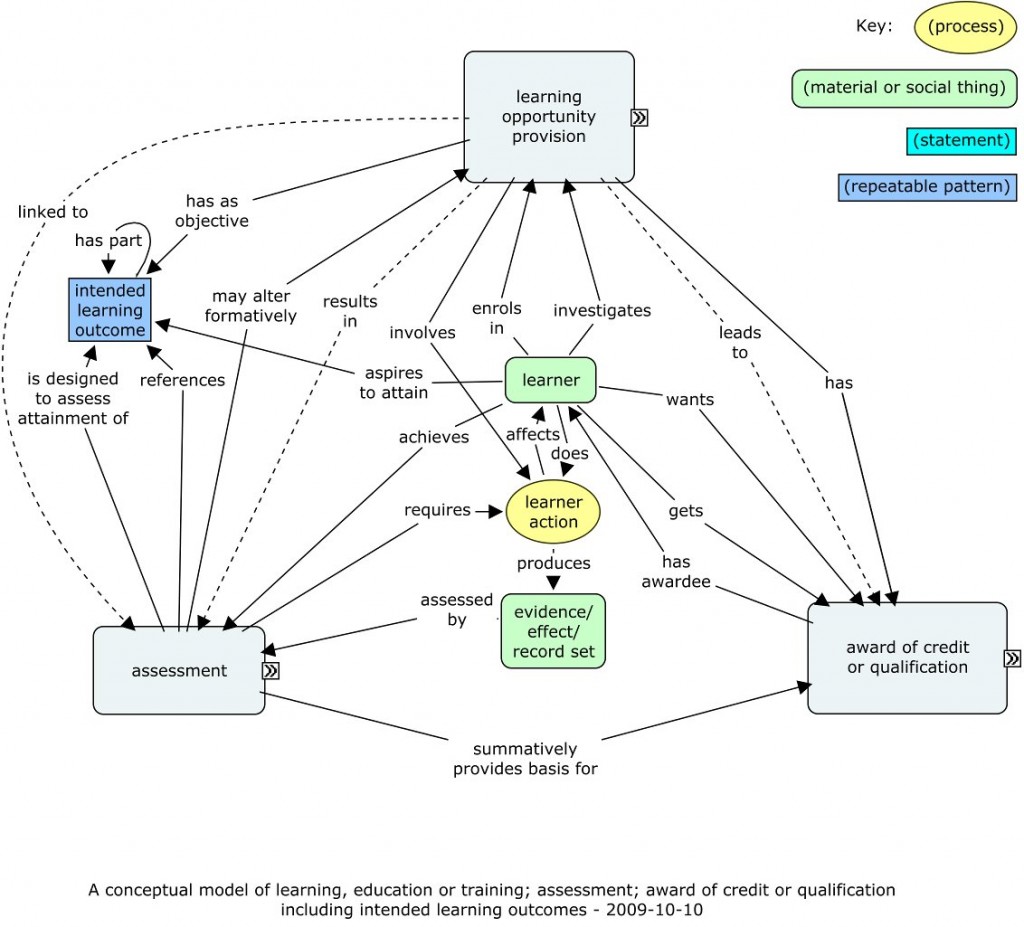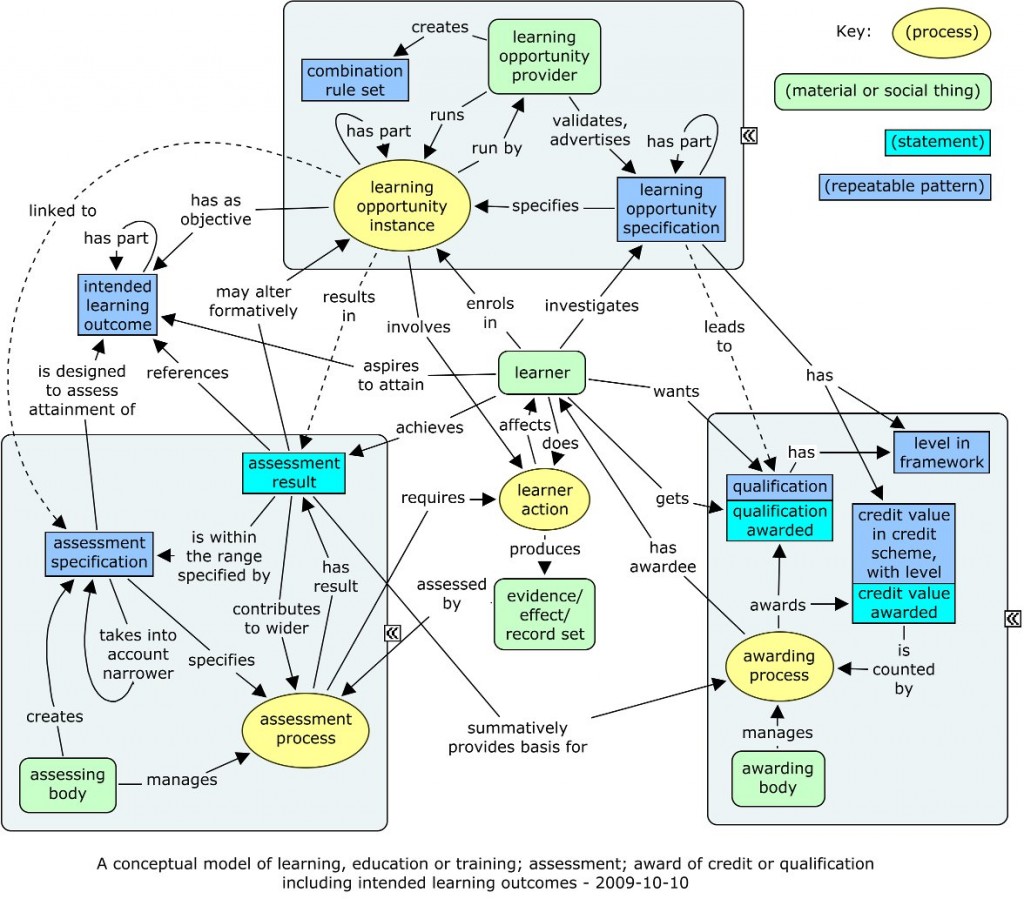(5th in my logic of competence series)
Beyond levels, there are still many aspects to the abstractions that can be seen in competence definitions and structures in common use. What else can we identify? We could think of these as potential attributes of competence, though the term “attributes” is far from ideal.
Just as levels don’t appear in competence definitions themselves, when an attribute is abstracted from a competence definition it usually does not appear explicitly. But unlike levels, which are set out plainly in frameworks, we have to be aware to find other abstracted features.
I started this series by saying that the logical starting point for talking about competence are the claim and the requirement. And indeed, we see many implicit or explicit claims to competence with plenty of detail — for example in the form of covering letters accompanying CVs in support of applications for opportunities. Following this through, it is relevant to consider what else could be said in support of a claim to competence — that goes into more detail than, say, official recognition that a particular standard of competence has been reached.
Imagine that you had done a course on “production horticulture” (the topic mentioned in previous entries) and received a certificate, perhaps even with an attached Europass Certificate Supplement describing the “skills and competences” that you are expected to have acquired by the end of this course. Alternatively, your certificate may not have come as a direct result of a course, but instead from “APEL” — the accreditation of prior experiential learning. That would mean that you had plenty of experience as a horticulturalist, and it had been assessed that you had the skills and competence covered for a particular certificate that covers production horticulture. Now, if you were applying for a job, as well as citing your certificates, maybe attaching the information in any supplements, and stating the level of competence you believe you have achieved, what else would you be likely to want to say to a prospective employer, e.g. in a covering letter, or at an interview?
The most immediately obvious extra feature of one’s own experience might be, for horticulture, what kind of crops you have experience in growing. Stating this is an natural consequence of the fact that the LANTRA standards do not refer to the kind of crops. Next, the NOS documentation explicitly mentions indoor (perhaps greenhouse) and outdoor growing, though these terms are not used in the actual definitions. Which do you have experience of? Or, broadening that out, what kind of farms have you worked on? Soon afterwards, the documentation goes on to talk about equipment, without mentioning the types of equipment explicitly. Can you drive a tractor? Beyond this, I’m ignorant about what kinds of specialist equipment are used for different kinds of cultivation, but more relevant questions could be asked, as it might be important to know whether someone is experienced in using whatever equipment is used in the job being offered. Most workers these days will not be experienced in using hand ploughs or ox-drawn ploughs… And after equipment, the list of attributes that are abstracted out — left out from documented competence definitions — continues.
Some differences in skills and competence are less significant, and you may not need to mention them explicitly, because it is understood that any farmhand could pick up the ability quickly. It is the skills that take longer to learn that will be more significant for recruitment purposes, and more likely to be mentioned in a covering letter or checked at interview.
One of the key facts to recognise here is that the boundary is essentially arbitrary between, on the one hand, what is specified in documentation like the LANTRA NOSs, and on the other hand, what is left for individuals to fill in. Where the boundary is set depends entirely on the authority. While LANTRA standards do not specify particular crops or equipment, we could imagine that there was a professional association of, say, strawberry growers, that published a set of more detailed standards about what skills and competences are needed to grow just strawberries. Quite possibly that would mention the specific equipment that is used in strawberry growing. (There is for example as it happens a Florida Strawberry Growers Association, but it doesn’t seem to set out competence standards.)
Different occupational areas will reveal a similar pattern. It is unlikely, for instance, that ICT skills standards (e.g. SFIA, e-CF) will specify particular programming languages, but it is one attribute that programmers regularly mention in their CVs or covering letters when seeking employment. Or, take the case of health professionals. There are several generic types of situations with different demands. What “is required” of a competent health professional may well differ between first aid situations with no equipment; at the scene of accidents; in emergency units in hospitals; and for outpatient clinics. Some skills or abilities may be present in different forms in these different situations, and we can perhaps imagine someone mentioning in a covering letter the kinds of situation in which they had experience, if these were particularly relevant to a post applied for.
It should be clear at this point that extra detail claimed will naturally fill in for what is left out of the skills or competence standard documentation. But because what is sometimes left out is equally sometimes left in the documentation, it would make a great deal of sense for industry sectors to set out a full appropriate terminology for their domain — a “domain ontology” if you like. (Though don’t be using that “O” word in the wrong company…) Those terms may then be used either within competence definitions, or for individuals to supplement the competence definitions within their own claims. Typically we could expect common industry terms to include a set of roles, and a range of tools, equipment or materials, but of course, these sets will differ between occupations. They may also differ between different countries, cultures and jurisdications. As well as roles and equipment, any occupational area could easily have their own set of terms that have no corresponding set in different areas. We saw this above with indoor and outdoor growing. For plumbing, there are, for example, compression fittings and soldered fittings. For musicians, there are different genres of music each with their own style. For builders, building methods and parts differ between different countries, so could be documented somewhere. And so on.
There is a very wide range of particular attributes that could be dealt with in this way, but it is probably worth mentioning a few particular generic concepts that may be of special interest. First, let us consider context. For standard descriptions of competence, it will be the contexts that are met with repeatedly that are of interest, because it is those where experience may be gained and presented that may match with a job requirement. To call something a context, all that is needed is to be able to say that a skill was learned, or practiced, in the context of — whatever the context is. A context could be taken as a set of conditions that in some way frame, or surround, or define, a kind of situation of practice. If we have a good domain ontology, we would expect to find the common contexts of the domain formulated and documented.
Second, what about conditions? We can refer back to more informal usage, where someone might say, for instance, I can plough that field, or write that program, as long as I have this particular tool (agricultural or software). It makes a lot of sense to say that this is a condition of the competence. Conditions can really be almost anything one can think of that can affect performance of a task. As suggested in the discussion of context, a set of stable and recognisable conditions could be taken to consititute a context. But the term “conditions” generally seems to be wider. It means, literally, anything that I can “say” that affects the competence. As such, we are probably more likely to meet conditions in the clarification of an individual claim than in standard competence documentation. That still means that there is value to assembling terminology for any conditions that are understandable to many people in a domain. It may be that a job requirement specifies conditions that are not in the standard competence definitions, and if those conditions are in a domain ontology, they can potentially be matched automatically to the claims of individuals referring to the same conditions.
Assessment methods should also specify conditions under which the assessment is to take place. The relevance of an assessment may depend at least partly on how closely the conditions for the assessment reflect the conditions under which relevant tasks are performed. And talking about assessment, it is perhaps worth pointing out that, though assessment criteria are logically separate from the definitions of the skills and competence that are being assessed, there is still a fluid boundary between what is defined by the competence documentation, what is claimed by an individual, and what appears as an assessment condition or criterion. The conditions of an assessment may add detail to a competence in such a way that the individual no longer needs to detail something in a claim. An asssessment criterion may fairly obviously point to a level, but, given that a level is also sometimes wrapped in with a competence definition, the criterion may take over something of the competence definition itself. It would be expected that assessment criteria also use the same domain terminology as can be used, both for competence definitions, and within claims.
If the picture that emerges is rather confused, that seems unfortunately realistic. The fluid boundaries that I have discussed here are perhaps a natural result of the desire to specify and detail skill and competence in whatever way is most convenient, but that does not add any clarity to distinctions between context, conditions, criteria, levels, and other possible features or attributes of competence. On the other hand, this lack of clarity makes it paradoxically easier to represent the information. If we have no clear distinction between these different concepts, then we can use a minimal number of ways of representing them.
So, how should competence attributes, including context, conditions and criteria, be represented?
- To do this most usefully, a domain ontology / classification / glossary / dictionary needs to exist. It doesn’t matter what it is called, but it does matter that each term is defined, related where possible to the other terms, and given a URI. This doesn’t need to be a monolithic ontology. It could be just a set of relevant defined terms in vocabularies. And there is every reason to reuse common terms, vocabularies and classification schemes across different domains.
- There is one major logical distinction to be made. Some terms are strictly ordered on a scale: these are levels or like levels. Other terms are not on a scale, and are not ordered. These are all the rest, covering what has been discussed above as context, conditions, criteria.
- Competence definitions, assessment specifications, job requirements and individual claims can all use this set of domain related terms. The more thoroughly this is done, the more possibilities there will be to do automatic matching, or at least for the ICT systems to be as helpful as possible when people are searching for jobs, when employers are searching for people, or anything related.
Having sorted out this much, we are free to consider the basic structures into which competence concepts and definitions seem to fit.




